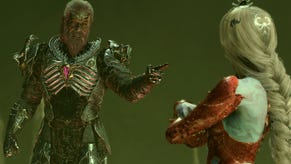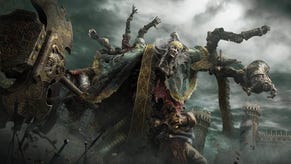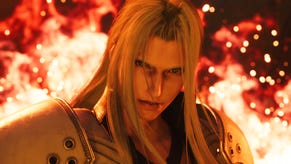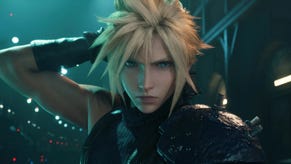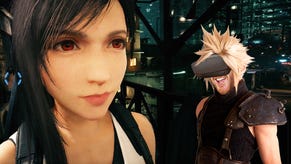Final Fantasy 7 Remake: yesterday's game looks stunning with today's tech
How 22 years and three console generations improve a genuine PS1 classic.
The biggest surprise about this E3's showing of the Final Fantasy 7 Remake? That it's matured into a gorgeous - and very much playable - game. Square Enix's new trailer made a real mark this year in showing how modern rendering methods transform a PlayStation classic into something palatable for the modern day. Gameplay systems are laid bare, and there's a much better idea of how the scale of Midgar is being expanded upon. From a technical perspective, it finally looks set to deliver as one of the company's most ambitious projects.
The latest showing also demonstrates how far we've come across four console generations. A caveat before we begin this: the pre-rendered backdrops, video sequences, and simple polygonal modeling of the 1997 original still carry a lot of charm. Arguably there's no way this remake can recreate the impact of playing it at a time when many of these techniques had never been seen before on consoles. Regardless, what's clear is that Epic's Unreal Engine 4 is more than up to the task of adding today's state of the art rendering tech. For Square Enix the overall goal is simplified: it's giving the big budget treatment to just an early portion of the original game in this first episode. A focus only on the initial area of Midgar narrows the scope, concentrating its focus, and letting its team ratchet up the micro-level detail.
In terms of the rendering set-up, Square Enix has so far shown the game running at a native 1920x1080, and bearing in mind UE4's track record and the wealth of detail on show here, we may well be looking at the PlayStation 4 Pro version of the game. Where we do have is confirmation is that Square-Enix plans to roll out the remake as a cross-gen title and it'll be fascinating to see how the developer plans to utilise the extra horsepower and revolutionary storage system.
Performance is an interesting point, in that Square-Enix's presentation - in both press materials and the livestream - is delivered within a 'cinematic' 24fps container. It's important to stress that it's extremely unlikely that the game itself presents like this - tell-tale ghosting artefacts in the stream show how the video compression system is attempting to squeeze more temporal resolution into a lower frame-rate video. The assets are not a reflection on how the game runs, but it does mean that for now, we can't even see what the target performance level is.
What the E3 presentation does show is the standout detail pushed out by Unreal Engine 4. Side-by-side comparisons of the same scenes in both the remake and the original game look almost ridiculous - but it's a wonderful example of how videogame graphics have evolved in 22 years. Square Enix's move to real-time 3D blitzes past the quality of the original's video sequences. From the lighting to the materials, there's a lot of change. Scenes are added, re-arranged - but the point is, the remake shows respect for the composition of the original material and the beats of how key sequences play out.
Let's consider the opening shot of Midgar. In terms of rendering a huge city, the remake targets a high bar in terms of density. It's filled in with more streets, billboards, scaffolds, tram-lines and terraced houses. Cars line the motorways circling each sector, and the Shinra building at its centre is flanked by spotlights, casting volumetric light, dotted with signature Mako-green particle effects. In 1997, this shot was a declaration of the intent for Squaresoft's move to 3D and CG cutscenes. It was indicative of the team's jump from the sprite-based work in Final Fantasy 6, but by today's standards it does come across as barren. The remake fills in these gaps in a way that you'd hope, for a 1080p picture and beyond.
A major feature of Unreal Engine here is physics fidelity. Square Enix taps into it from every angle in this trailer - but it does involve looking close to see how far it goes. The cloth on Aeris' dress sways during her opening shot: the pink ribbon, and hair flowing naturally as she steps up from the fountain. In gameplay? We have boxes and debris knock around to every attack. Even the sewer 'Sahagin' enemies have physics applied to their tongues as they sway from side to side - hardly a detail we'd catch in the original. And then, finally, we have liquid simulation shown off heavily in the whiskey decanter in Cloud's hand, at Tifa's bar.
Character detailing is standout too, comparing well with other top-tier remake efforts such as Resident Evil 2. You can catch minute scratches in Cloud's buster sword, and even the rich cotton material of his top comes to life. Given what the developers had to work with in 1997, even his more lifelike battle character model didn't give a great sense of what he was actually wearing - but now it's realised properly. Tifa's reveal is also a highlight. Again there's a blend of metal inserts and leather across her gloves that shows the minute level of detail Square Enix is aiming for. The only part which doesn't hold up too well here is the hair rendering. In the bar scene there's a lot of dithering to each strand - but it's hardly a deal-breaker.
It's hard to overlook the focus on particle effects throughout the trailer. Every encounter erupts in a frenzy of alpha-based detail. Barret's gatling gun causes sparks against metal, and ash rises from nearby fire - where the real-time nature of combat energises the scene in a way that wasn't possible before. Let's hope that HDR support makes the cut - it wasn't present in the UE4-powered Kingdom Hearts 3, but on the flipside, the integration into Final Fantasy 15 is first-class.We'll have to see how this one pans out
The trailer is labeled as development footage, but some scenes could partly be high quality movie encodes, rather than in-game. Not that this matters of course, but gameplay sees the post-process pipeline dialled back. The depth of field is less of a feature, for a start. As for motion blur, gameplay scenes keep only the per-object form of it - on attacks - while the camera blur seems to be cut away. This may change by the final release, but that's how it stands right now.
Curiously, you can see the road not taken in the Final Fantasy 8 Remaster. Announced at the very same E3 presentation, it's boasting new character models with some touch-ups to its backdrops. Fundamentally it's the original experience with a new skin, but, it's an approach that might have worked for the classic Final Fantasy 7 experience. Instead, Square-Enix has plunged into the deep end with a full-blooded remake that realistically, will see follow-ups to complete the story arrive well into the next console generation. It's another example of how the process of game development has evolved: triple-A titles are far more expensive to produce and much richer and denser than any PS1 title. The remake project is a long play, then, but the first part - at least from what we're seeing at this year's E3 - is starting on the right foot in terms of its ambition and scale. Put simply, I can't wait to see more.



